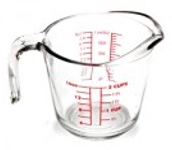
Wow – we are now more than a year into the COVID-19 pandemic, which has impacted virtually all aspects of life and business. And analysis.
Around this time in 2020 I wrote this post which talks about important things to consider while doing analysis during uncertain, volatile times. During several weeks in March-April, 2020, sales for many products were way up as shoppers stocked up or way down as disruption to supply chains caused out-of-stocks. Now as we are lapping those very unusual periods, here are some things to think about when analyzing business performance in 2021. Similar to last year’s post, I’ll use a framework based on the cornerstone of syndicated data organization: the four dimensions. Take a look at this post for a refresher (or first lesson) on this foundational topic.
Throughout this post, I will assume that sales of Brand X are down -22% vs. the same period last year.

Product
Think like a retailer and look beyond your brand: It is always a good idea to track category and competitive sales along with your own! Brand X’s sales decrease of -22% sounds like bad news, but…if the category is down -25%, it’s not as bad and the brand is gaining share. There has been lots of analysis on product shifting during the pandemic, between brands and at the item level. At the beginning of this volatile period a lot of this shifting was driven by supply chain issues and some shoppers have stuck with new things that they tried, while others have gone back to their old favorites.
Another very useful product benchmark is what’s happening with Total Store sales. It is important to understand the performance if your category and brand relative to shopping in general. (See below for more on channels – you have to consider online sales, in addition to traditional brick-and-mortar sales available in most IRI/Nielsen/SPINS POS databases.

Market
Most common question in all of CPG analysis: are online sales included?? My best answer is to confirm with your data supplier how online sales are accounted for in their databases. It all depends on how the retailers themselves track their sales and what they share with the data vendors. Here’s a general rule: if an online order is fulfilled from a store then it is included in the retailer trading area and market level data. “Fulfilled from a store” could be either click-and-collect (also called BOPIS – buy online, pick up in-store), ordered online and delivered or (much less frequent) ordered online and shipped. And that delivery could be from the retailer itself or from a 3rd party like Instacart, DoorDash, etc.). Some retailers do report their e-commerce channel separately but many do not. If an online order is fulfilled from a warehouse (and not from a store) it is only reported in a separate retailer e-commerce total if the retailer shares that informarion and allows it to be reported. See – not a simple thing, which is why you should definitely ask your data vendor for documentation about how they handle the online channel. We encourage any of our readers who work at Nielsen or IRI to provide additional information about their reporting of the online channel in the Comments!
Think about channels: Given the huge growth of online sales for delivery or for pick-up (“click and collect”), you have to look at sales from all available retail channels. Click here for a look at Omnichannel Shopping Behavior provided by Numerator. You can compare your brand’s sales trends by channel with each channel overall. They also provide an early read “reopening shopping behavior index,” especially useful as shoppers return to shopping patterns that they exhibited pre-pandemic due to the increasing number of people who are fully vaccinated.
 Measure omnichannel performance: Both Circana (formerly IRI) and NielsenIQ have continually evolving offerings that give a more complete view of shoppers’ purchases in stores and online.
Measure omnichannel performance: Both Circana (formerly IRI) and NielsenIQ have continually evolving offerings that give a more complete view of shoppers’ purchases in stores and online.
Consider in-home vs. out-of-home: Some of the -22% decline in Brand X sales could be due to the reopening of restaurants, in general and for indoor dining. Note that the Numerator tracker mentioned above includes QSR as the last column in their channel comparison. QSR is “quick-service restaurants,” otherwise known as fast-food.

Period
Use multiple comparison periods: Of course we all hope that the pandemic will be a one-off event and that behavior/trends of 2020 are not representative of what is likely to happen in future years. So…it is now fairly common and recommended to compare current performance with data from 2 years ago – current vs. 2019, pre-pandemic. Most IRI/Nielsen/SPINS databases do have 3 years of history and I have seen some databases that now have facts for absolute and % change vs. 2 years ago (“chg v. 2YA”).
Be very specific when sharing data: It’s hard to overstate the importance of this! It is key, for both internal and external/retailer clients of your dashboards/trackers/analyses. In my example, “Brand X sales are down -22%.” Anybody seeing that will want to know the length of the period. Depending on your analysis or reporting objective, the period should be different! Internal clients like management, marking and finance should want an objective picture of what is really happening with the business. (I know that politics are often involved, where you’re not allowed to share “bad news” with management but that’s a topic for a different post.) For Sales or Retailers, some want to know “what’s really happening” but many want to only see good news. You’ll know your own clients with respect to this! You may need to do some hunting for a period that illustrates good news for your category/brand – the most recent 12 weeks, most recent 52 weeks, since sales settled down after the first month or two or three of the pandemic or some other period? It is always a best practice to indicate the period, both the duration and end date, along with any data that you are sharing with others. Given how quickly things continue to change, you really need to be specific (for example, “12 weeks ending 3/27/21”). Be aware of periods when reading articles, blog posts etc. that have sales trends!
Look at both aggregate and trended data: Make sure that you are looking at business performance in a way that allows you to accurately assess what is really happening. If it’s available in your database, look at things on a trended weekly basis. That allows you to see if the decline of -22% is consistent across the period, is accelerating or slowing down. It also helps determine the best “starting week” for the current situation. The start week you want to use can vary by category and even by region as different places open up based on vaccination rate.

Fact/Measure
Look at dollar sales and physical volume: Another question someone is likely to have about Brand X sales being down -22%: is that dollar sales or units or equivalized units? Most publicly reported data is in dollars, since that is the only way to compare across categories. If you have access to units, or even better equivalized units, look at that, too. Pricing has risen in almost all categories over the last year (and are expected to rise again this year), resulting in dollar sales outperforming physical volume for the foreseeable future. Here’s an informative article all about that, from McKinsey.
Purchase dynamics: Panel data continues to be an important source for insights, in addition to POS data. Panel data would help you understand why sales are down -22%: is it because fewer people are buying the product now or because regular buyers are decreasing their purchases or some combination of both of those? Tracking penetration and buy rate over time helps determine when product sales have likely settled in at a “new normal” level.
Do you have other questions about doing analysis after the coronavirus pandemic? Ask them in the Comments below and we will try to answer, as best we can. Continue to stay safe, everyone!

Great information! Thanks for compiling a useful framework to take into account how 2020 trends impact any sales & panel analysis and interpretation today.
One question I had was regarding how best to plan trade promotions using historical trends. With the COVID impact on in-store traffic, stock-ups or declines, display causal collection as well as growth in e-comm, how would you recommend analyzing in-store trade performance for future planning?
Not an easy answer to that, Paul! I would probably use base volume levels and lifts from 2019 as a starting point to plan trade promotions. Of course those couple of weeks in March 2020 with all the panic buying are not at all representative regardless of any trade promotions happening at that time and there was no Display data collected for several months (until I think February 2021). As far as I know Nielsen (and probably IRI) did adjust base volume by including some kind of control for “weird COVID weeks” in their calculations and that has gone away as sales returned to more normal patterns in the Fall 2020. I feel like growth of e-commmerce is less of an issue since most retailers include their “click-and-collect” sales in the data they share with IRI and Nielsen. Not sure how helpful this is, but if you want to discuss further please click on Contact at the upper right and I’d be happy to set up a short meeting.
there are a lot of questions about inflation and how it impacts the business. We would love to hear your thought on how we can analyze this topic!
Wow – that can be a really big topic! Of course the (unsatisfying) short answer as to how inflation impacts the business is…it depends.
There is a lot going on other than inflation so it’s tough to isolate the impact of inflation just from conducting ad hoc analyses using your “regular” syndicated database. A more sophisticated modeling effort could do a better job of factoring out the impact of distribution, price, trade and inflation. Don’t forget that we still (in late March 2022) have supply chain/availability issues for some products, plus there are demand shifts as Covid behaviors slowly move back to normal.
Here are some things to consider when analyzing the business during inflationary times:
– Don’t just looking at dollar sales! EQ and unit sales tell you how much actual product is being purchased. When there is inflation, dollar sales could be increasing due to higher prices but shoppers are buying less product.
– This presentation from IRI has some interesting findings on price sensitivity and LOTS of other good stuff. (The report is from early December 2021, with data thru 10/31/21.)
– Think about your category/product and what/where consumers might substitute as prices rise. How are prices moving for those substitutes? To the extent that prices are rising for all substitutes, the impact of a price change for your product is likely to be lower.
– Remember that inflationary expectations are temporary. Although regular/non-promoted prices are unlikely to come down (they rarely do!), we are more likely to see deeper discounts and/or more frequent promotions when the inflation rate comes down again.
Hope that helps!